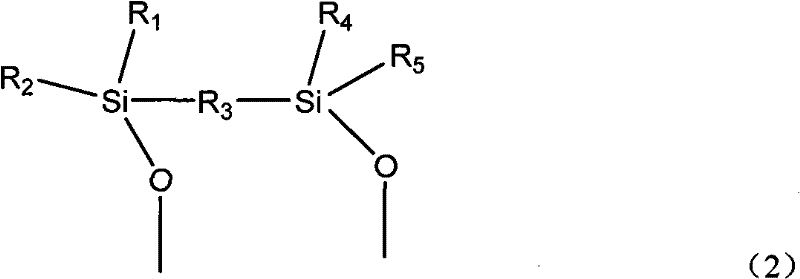Method for preparing butanediol by carrying out two-stage catalytic hydrogenation on butynediol
A technology for producing butynediol and butanediol, which is applied in the field of hydrogenation and can solve problems such as environmental pollution, undisclosed catalyst preparation methods, and decreased reactivity
- Summary
- Abstract
- Description
- Claims
- Application Information
AI Technical Summary
Problems solved by technology
Method used
Image
Examples
Embodiment 1
[0053] (1) One stage bed hydrogenation
[0054] The raw material is purified aqueous solution containing 40wt% butanol diol, and the catalyst is Ni / Al 2 o 3 (Ni: 26.0wt%; silane group content is 3.75wt%, produced by Beijing Research Institute of Chemical Industry), using a fixed-bed reactor to evaluate catalyst performance, the reaction temperature is 130 ° C, the pressure is 2.0MPa, the hydrogen / phenylacetylene molar ratio is 8:1, the volume space velocity is 50h -1 . Catalyst evaluation after 200h by TG-MS (synchronous thermal analyzer coupled with mass spectrometer, synchronous thermal analyzer: NETZSCH, STA 449 C Jupiter, mass spectrometer: NETZSCH, QMS 403 C Aolos, the following examples are the same) analysis and calculation The amount of carbon deposited on the catalyst. The reaction result is: the conversion rate of butynediol is 100%, the conversion rate of butenediol is 85%, and the carbon deposition amount of the catalyst is 65 mg / g.
[0055] (2) Two-stage bed ...
Embodiment 2
[0058] (1) One stage bed hydrogenation
[0059] The raw material is purified aqueous solution containing 46wt% butanol diol, and the catalyst is Pd-Ag / Al 2 o 3 (Pd: 0.45wt%; Ag: 0.20wt%; Silane group content is 3.26wt%, produced by Beijing Research Institute of Chemical Industry), using a suspended bed reactor to evaluate catalyst performance, the reaction temperature is 65 ° C, the pressure is 1.5MPa, The hydrogen / phenylacetylene molar ratio is 10:1, and the volumetric space velocity is 50h -1 . After 200 h of catalyst evaluation, the carbon deposition amount of each catalyst was calculated by TG-MS analysis. The reaction result is: the conversion rate of butynediol is 100%, the conversion rate of butenediol is 78%, and the carbon deposition amount of the catalyst is 58 mg / g.
[0060] (2) Two-stage bed hydrogenation
[0061] The catalyst is Ni-Cu / Al 2 o 3 (Ni: 23.0wt%; Cu: 2.1wt%; Silane group content is 2.87wt%, produced by Beijing Research Institute of Chemical Industr...
Embodiment 3
[0063] (1) One stage bed hydrogenation
[0064] The raw material is purified aqueous solution containing 35wt% butanol diol, and the catalyst is Pd / Al 2 o 3 (Pd: 0.60wt%; silane group content is 4.02wt%, produced by Beijing Research Institute of Chemical Industry), using a suspended bed reactor to evaluate catalyst performance, the reaction temperature is 60 ° C, the pressure is 3.0MPa, the hydrogen / phenylacetylene molar ratio is 8:1, and the volumetric space velocity is 50h -1 . After 200 h of catalyst evaluation, the carbon deposition amount of each catalyst was calculated by TG-MS analysis. The reaction result is: the conversion rate of butynediol is 100%, the conversion rate of butenediol is 76%, and the carbon deposition amount of the catalyst is 54 mg / g.
[0065] (2) Two-stage bed hydrogenation
[0066] The catalyst is Ni-Cu-Zn / Al 2 o 3 (Ni: 22.0wt%; Cu: 2.3wt%; Zn: 1.6wt%; silane group content is 2.28wt%, produced by Beijing Research Institute of Chemical Industr...
PUM
 Login to View More
Login to View More Abstract
Description
Claims
Application Information
 Login to View More
Login to View More - R&D
- Intellectual Property
- Life Sciences
- Materials
- Tech Scout
- Unparalleled Data Quality
- Higher Quality Content
- 60% Fewer Hallucinations
Browse by: Latest US Patents, China's latest patents, Technical Efficacy Thesaurus, Application Domain, Technology Topic, Popular Technical Reports.
© 2025 PatSnap. All rights reserved.Legal|Privacy policy|Modern Slavery Act Transparency Statement|Sitemap|About US| Contact US: help@patsnap.com



